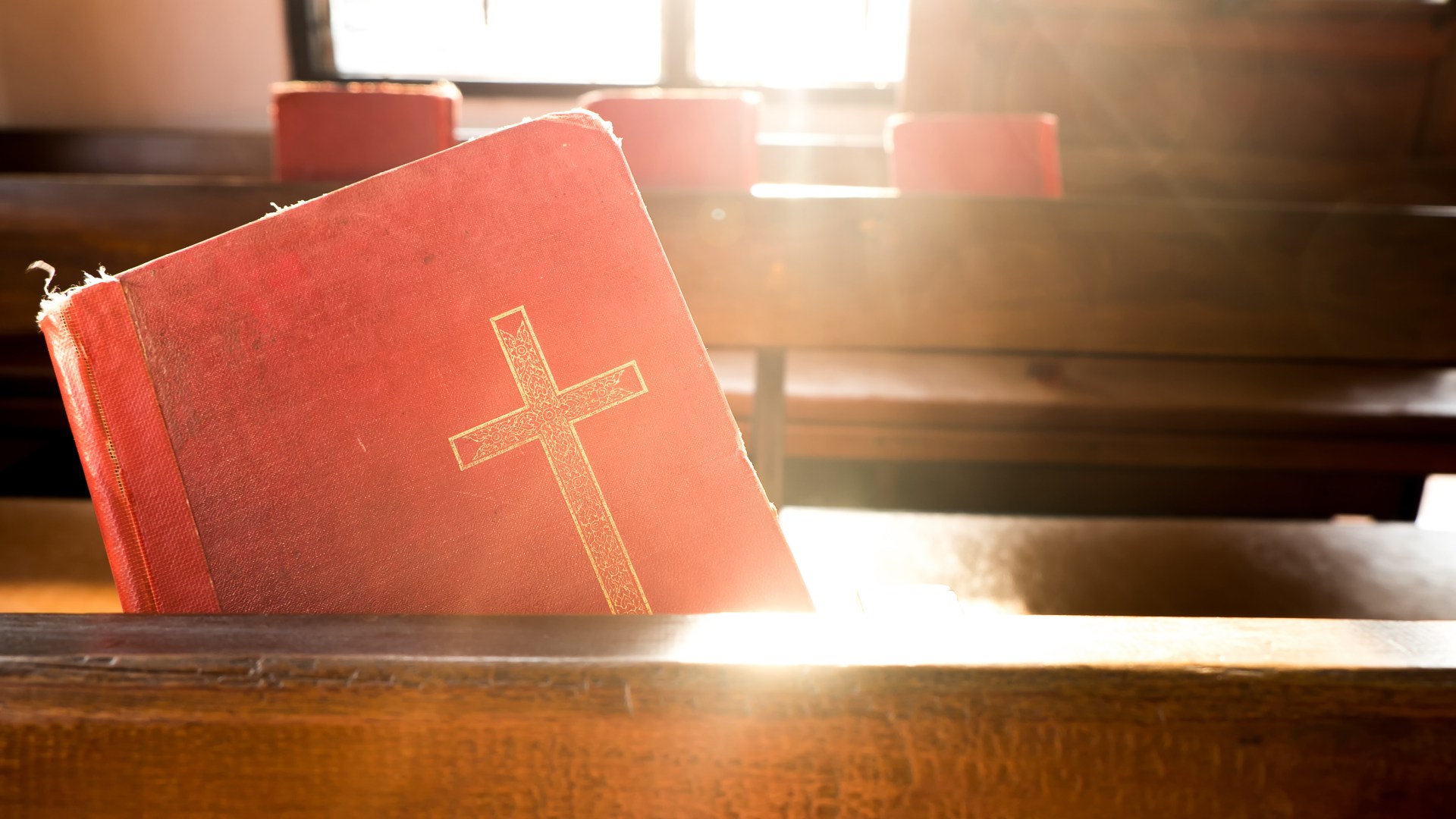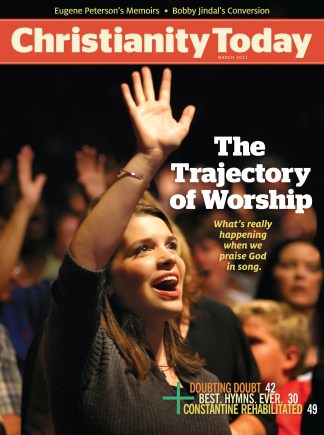There are many ways to identify the most lasting or best loved hymns among American Protestants. But what would we find by looking at all 28 hymnals published by mainline Protestant denominations from the late 1800s to the present? Out of almost 5,000 hymns, how many would appear in all 28 hymnals?
Why limit this analysis to mainline Protestant denominations? For one thing, a comparable series of hymnals from evangelical denominations from the late 1800s does not exist. And the hymnals most widely used by evangelical denominations in the past 40 years have been produced by independent publishers and therefore lack clear precedents.
The hymnals of mainline denominations have much to tell us. The denominations are home to many evangelicals—over one-third of Christianity Today's readers belong to mainline churches. And for most of their histories, mainline denominations were the bearers of orthodox Christianity in the U.S. Finally, though some of the denominations have taken a liberal turn on theological issues over the past century, hymnody by its nature is conservative ballast.
Perhaps there are clues, then, among the 13 finalists, as to which songs today will be around in 200 years. Robert T. Coote, senior contributing editor of the International Bulletin of Missionary Research, has done the research and presents his findings to CT readers.
The Inventory surveyed for this essay totals 4,905 hymns, found in successive hymnal editions of the following six mainline Protestant denominations:
- Anglican (Episcopal), four editions, from 1892
- American Baptist, four editions, from 1883
- Congregational (United Church of Christ), five editions, from 1897
- Evangelical Lutheran Church in America, five editions, from 1899
- United Methodist, five editions, from 1878
- Presbyterian Church (U.S.A.), five editions, from 1885
In some cases, the denominations encompass church bodies that were formerly independent. For the purpose of research, only the hymnals published by the primary bodies were included in the database.
Finalists had to be written in the late 1800s or earlier and still appear in current mainline Protestant hymnals. They had to appear in at least 26 of the 28 hymnals in the inventory. Where an original edition of a hymnal was not available, a revision of the hymnal was substituted. Christmas carols, choruses, and service music are not included in the database.
A typical contemporary hymnbook of 500 to 600 hymns will feature 250 to 300 hymns from the past and 250 to 300 new hymns. Middling hymn-writing may survive a generation or two but ultimately fades away. Of the hymns appearing in the denominational hymnbooks of the late 1800s, only half appeared in the first hymnals of the 20th century, and many more dropped away in subsequent editions. The process has continued through the generations. While historians highlight the great outpouring of new hymns in the Victorian era, our inventory indicates that less than 20 percent of the songs appearing in the hymnals of the late 1800s survive in current mainline Protestant hymnals.
The table presents the 13 hymns that have appeared in all 28 hymnals, as well as 9 others that appear in 27 of the 28 hymnals, and 5 more that appear in 26 of the 28 hymnals. The average date of the top tier of hymns is 1788 (excluding "O Sacred Head"). Still, wide acceptance of these and other hymns did not come until the middle of the 19th century, after a prolonged contest with the once-predominant practice of singing the Psalms.
Warm Orthodoxy
One striking observation is that the 13 hymns found in all 28 hymn-books show a longstanding commitment to the traditional understanding of worship and the Christian message. They focus on such foundational themes as the enduring triumph of the Cross, assurance in the ultimate rule of Jesus, and prayer for the continuing experience of God's love.
In view of the stance of most mainline Protestants in the late 1800s, the spiritually warm and orthodox character of these hymns is not surprising. What is somewhat surprising, given the unsettledness in some denominational quarters today, is that these hymns continue to be valued. Congregations, of course, vary, as do regions of the country. But if the members of mainline denominations are singing these hymns with any frequency and thoughtfulness, a basis for orthodox ecumenism is being cultivated.
Historians and hymnologists regularly tout the role of hymns in providing Christian doctrine, nurture, and reassurance. As Erik Routley put it, "The duty of a hymn is to get the best out of people … so they can respond to what the Lord has done." And as George Herbert (1593-1633), the Welsh orator and Anglican priest, said, "A verse may finde him, who a sermon flies, / And turn delight into a sacrifice."
Hymn-singing in the early decades of the Lutheran churches of Europe took place primarily in the homes of the faithful; hymns enabled families "to meet [the Lord] and to be united with him," as historian Peter Balslev-Clausen recently observed. A friend of mine in England systematically goes through his hymnbook, several hymns at a time, as part of his daily devotions. Augustine summed up the impact of hymn-singing this way: "To sing once is to pray twice."
Each generation sifts the hymns offered by its forebears and passes on the best of Christian hymnody. The hymns of Watts, the Wesleys, and others ultimately replaced the Psalter as a source of spiritual nurture in church worship. In his introduction to The English Hymn, J. R. Watson wonders if the Christian community today is witnessing the wane of hymn-singing, as praise songs and guitars take over. Richard Mouw, president of Fuller Theological Seminary, is more hopeful. In the foreword to Wonderful Words of Life: Hymns in American Protestant History and Theology, he acknowledges the current popularity of praise songs (which he characterizes as a contemporary form of the Psalter!). He contends, however, that hymn-singing will be back in strength "sooner rather than later."
Copyright © 2011 Christianity Today. Click for reprint information.
Related Elsewhere:
Download a pdf with a chart of everyone's favorite hymns.
Check back this week for more articles from the March special issue on worship.
Both Christianity Today and Leadership Journal have special sections on worship.










